A Personal Art Collection
Glebe House and Gallery is home to a large collection of art brought together by Derek Hill. There are over 1,500 items in the whole collection. The collection highlights chosen here represent various aspects of the multi-faceted life of Derek Hill and his contemporaries. Important artists of the twentieth century appear throughout Glebe, and each of their works here is tied to Hill’s life in a personal way.
If you wish to consult any item in particular, please contact us.
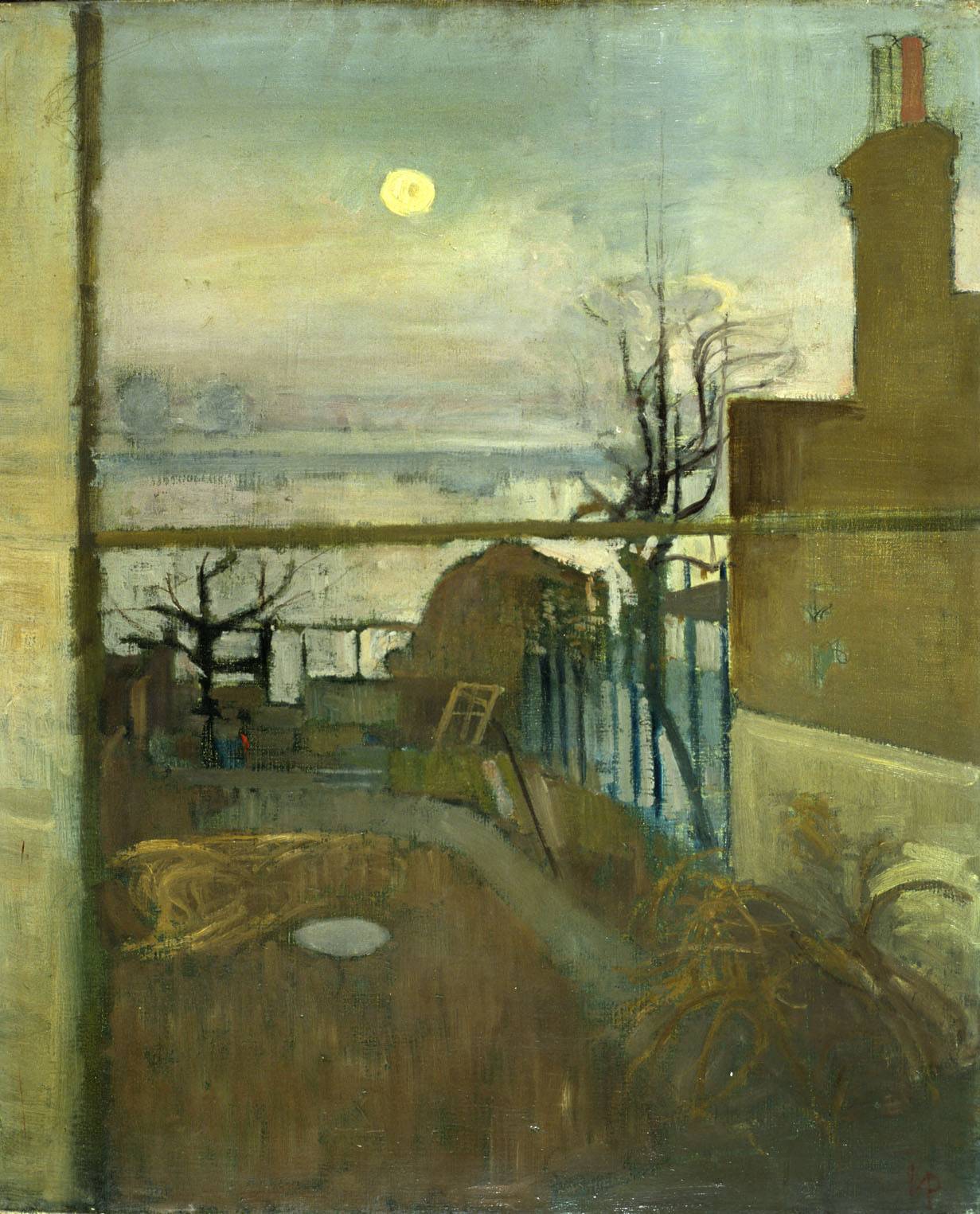
by Victor Pasmore (1918-1998)
Pasmore was a founder of the Euston Road School in the 1930s, and until 1948 painted subtle landscapes and interiors hailed as the best since those of Whistler. Derek Hill met him during the war while working on a farm in Wiltshire, and was greatly affected by Pasmore’s approach to painting. He especially admired the underlying geometry which later, by the 1950s, became the basis for Pasmore’s work, as he abandoned representational art for abstraction.
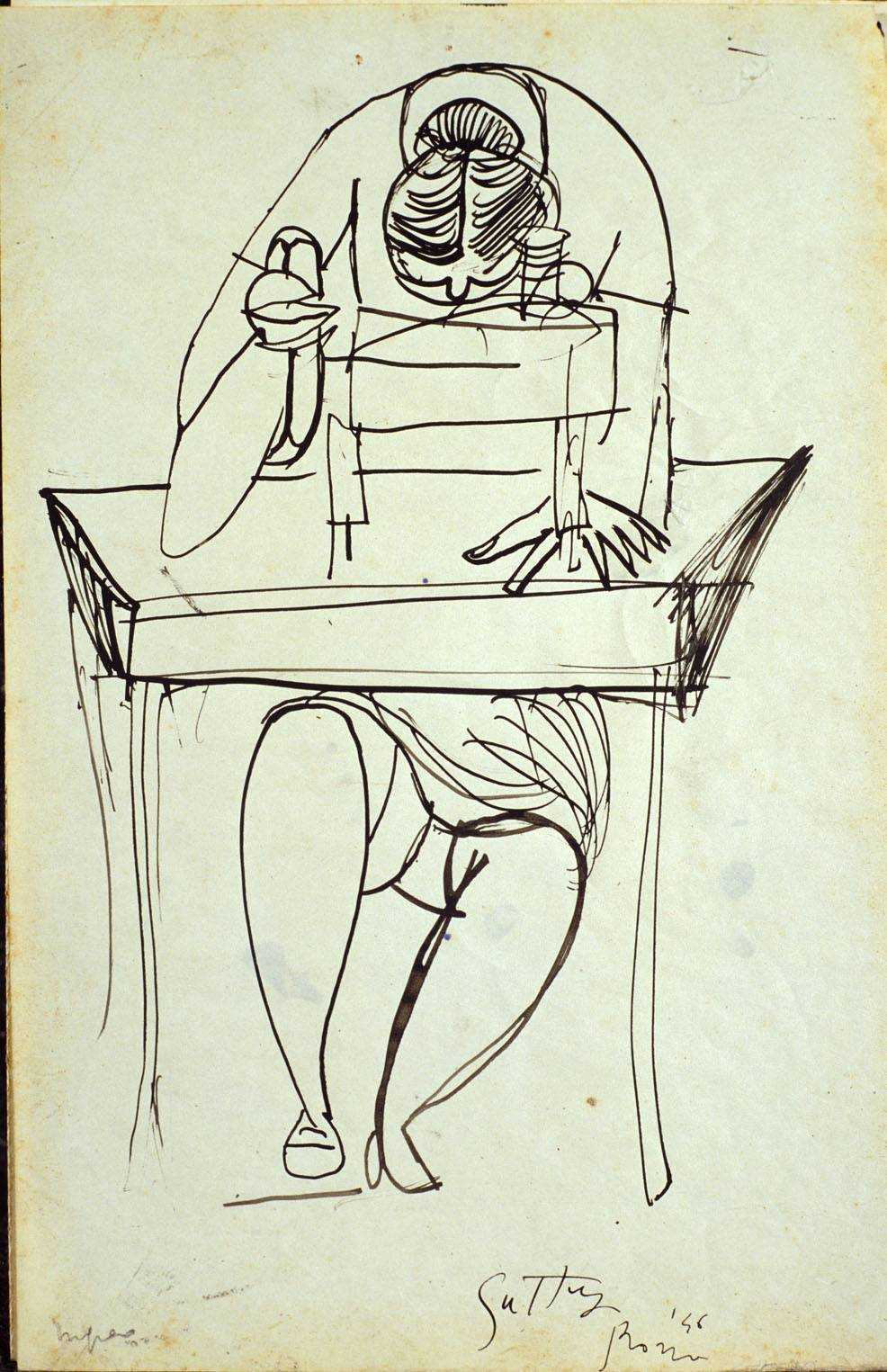
by Renato Guttuso (1912-1987)
Born in Palermo, Sicily, Guttuso studied law but abandoned it for painting, and became one of the leading Social Realist artists in Italy. As an active member of the Communist Party many of his paintings had specific political messages. Others are vivid portrayals of everyday life. This quick sketch, done in 1946, contains the same energy and spontaneity that Guttuso brought to his larger works.
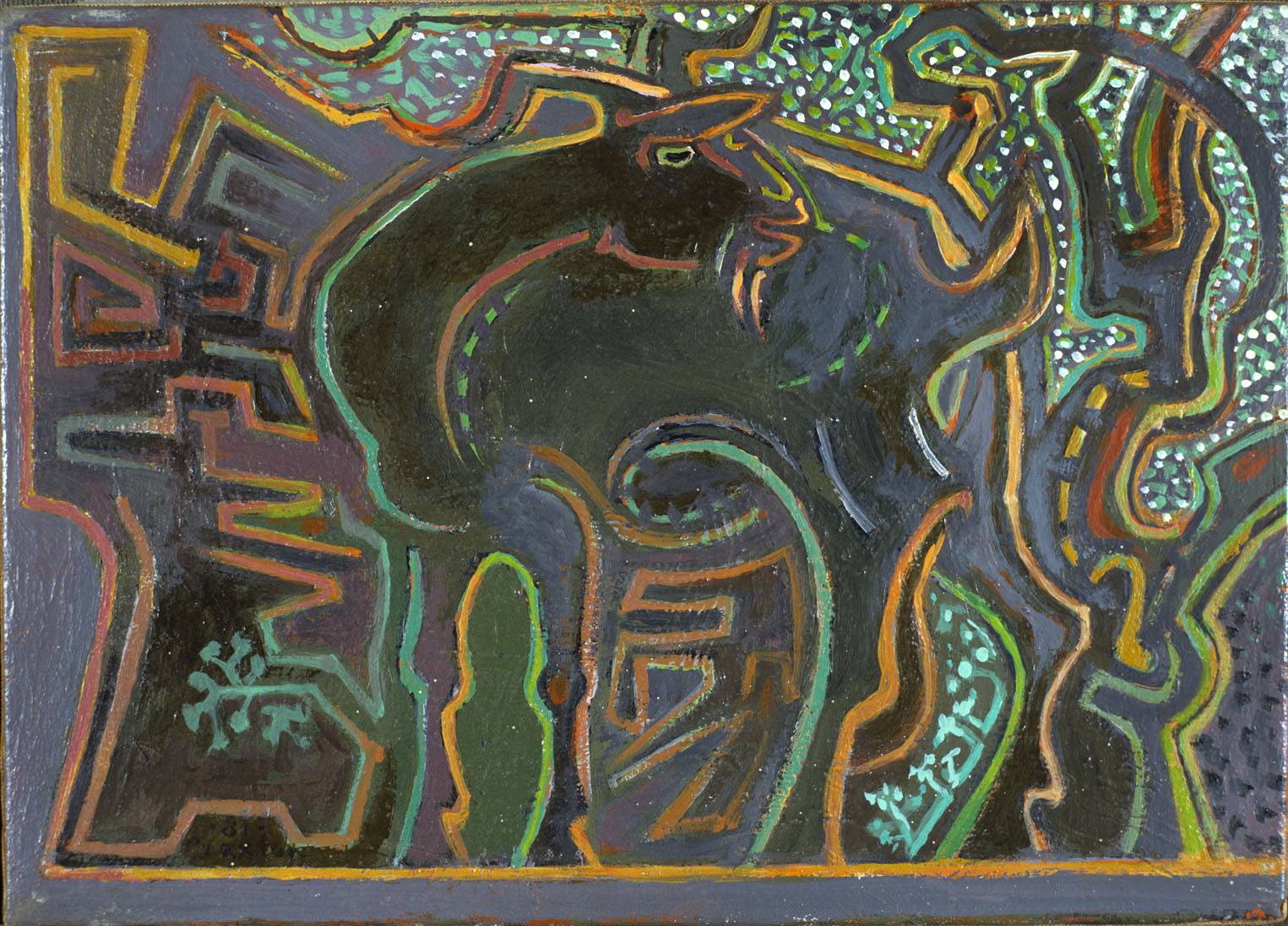
by John Craxton (1922-2009)
Craxton, who painted this goat in 1981, is best known for his images of Greece, its life and landscape. There is a chalk drawing of a Greek Piper also in the Hill Collection.
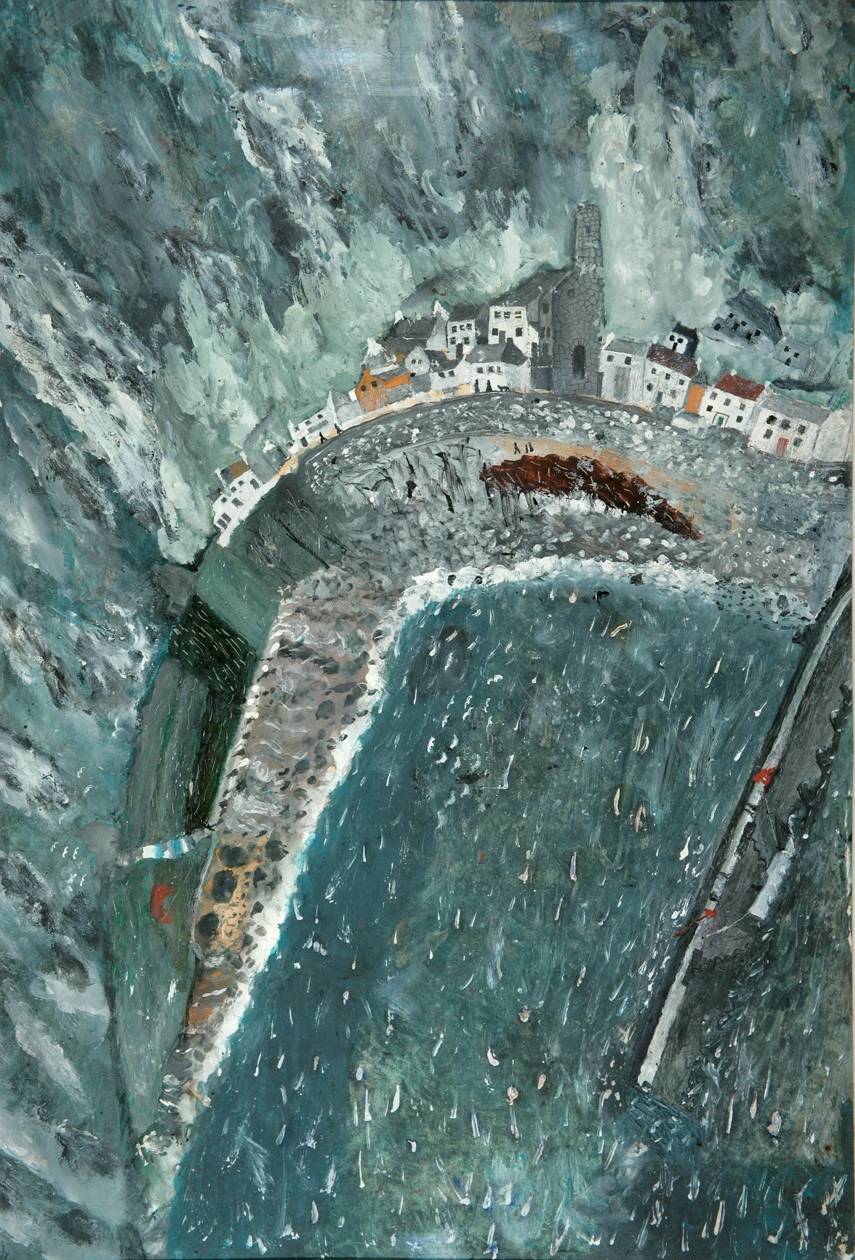
by James Dixon (1897 - 1970)
Soon after Derek Hill began painting on Tory Island, James Dixon, then in his sixties, watched him work and swore he could do better. This seagull’s view of the village and harbour was his response, and, like all of Dixon’s powerful and evocative scenes of Tory, was done entirely from memory.
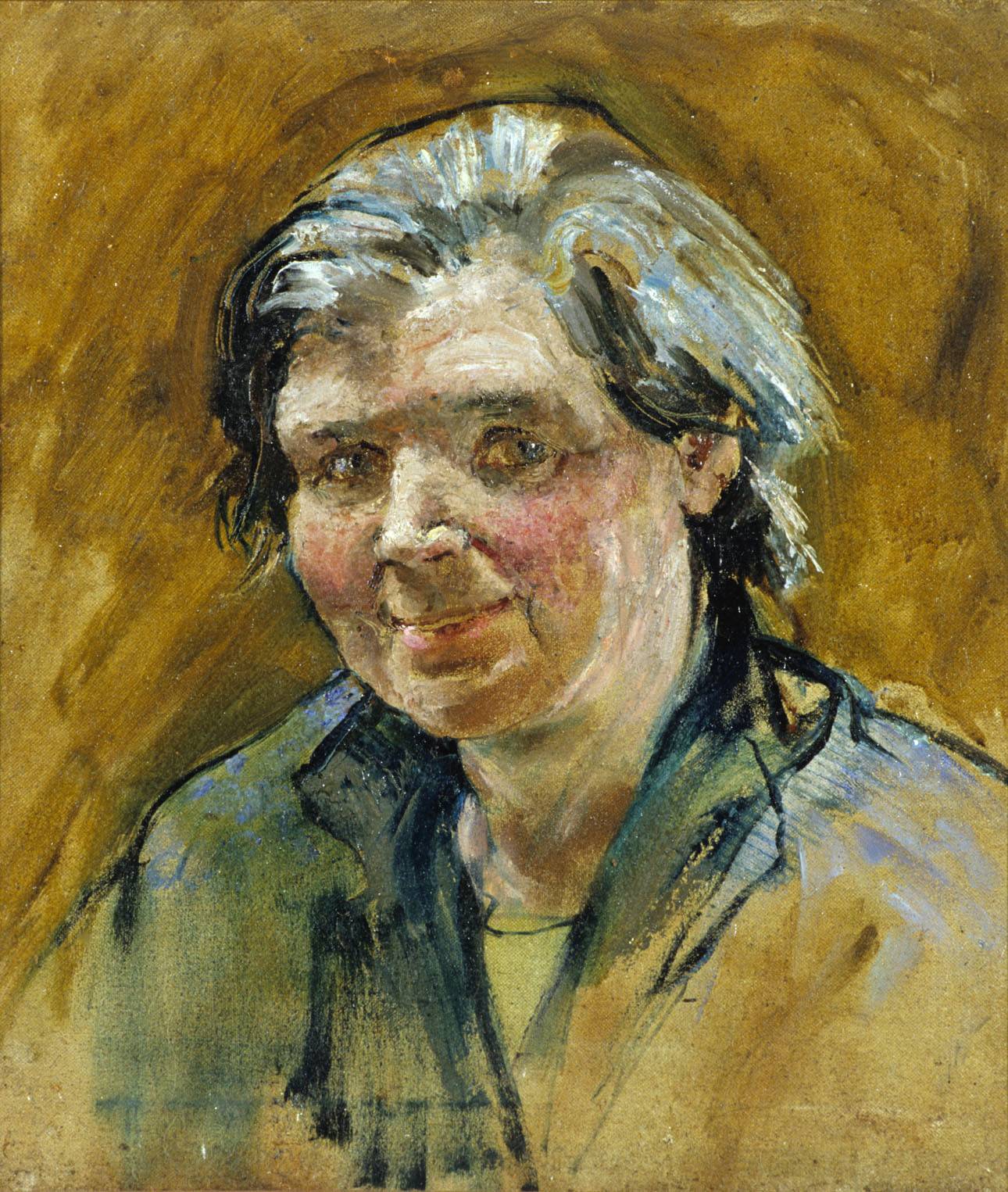
by Derek Hill (1916 - 2000)
Gracie McDermott worked at St Columb’s for fifty years, starting when it was a hotel, and later returning as Hill’s cook and housekeeper.
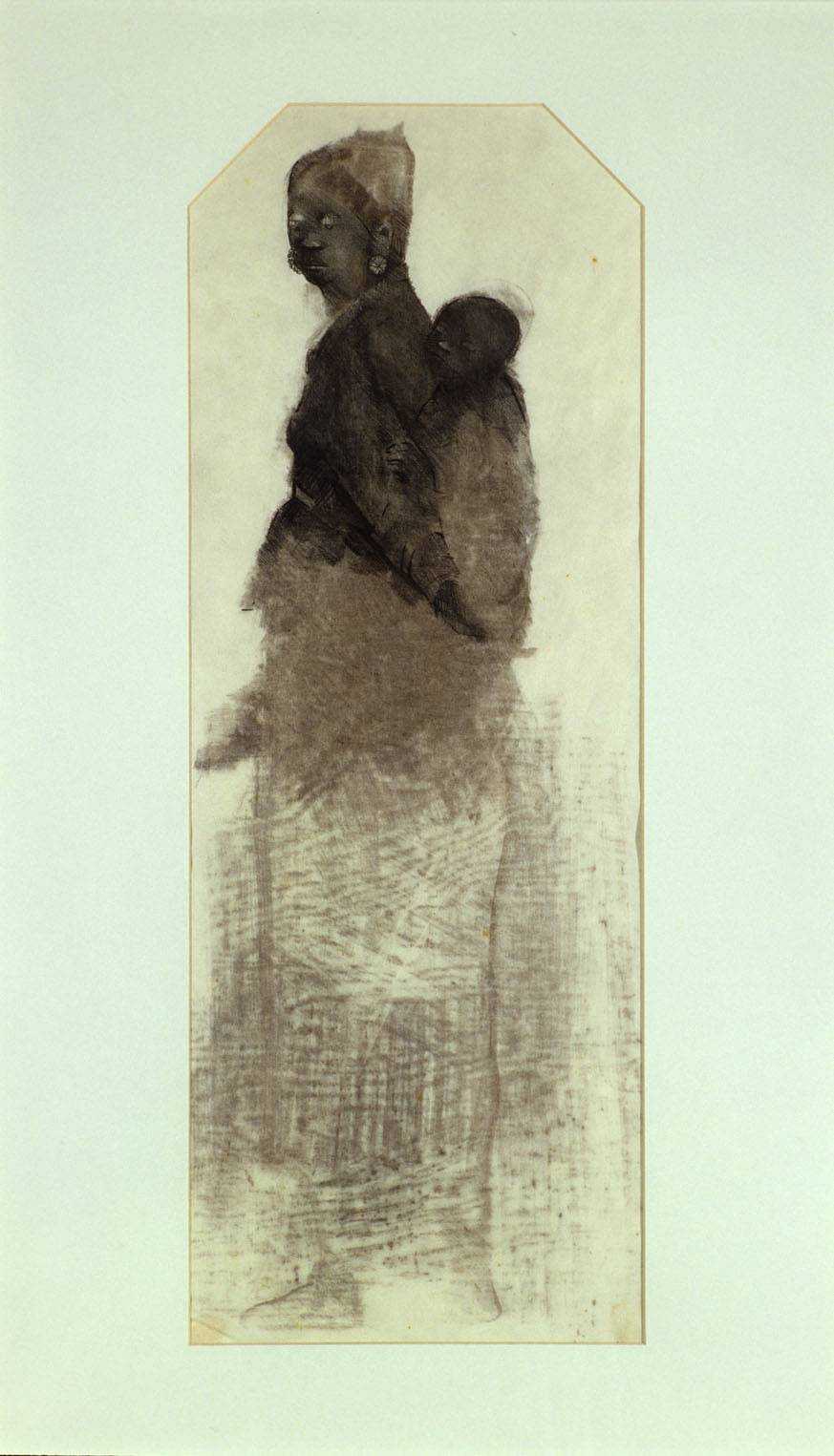
by Mary Kessell (1914 - 1977)
Mary Kessell worked mostly in pastel and charcoal to create blurred, evocative images, often of religious subjects. She was always concerned with suffering; in 1945 while in Germany as an official war artist she went to several refugee camps, and to Belsen, which had a profound impact on her art.
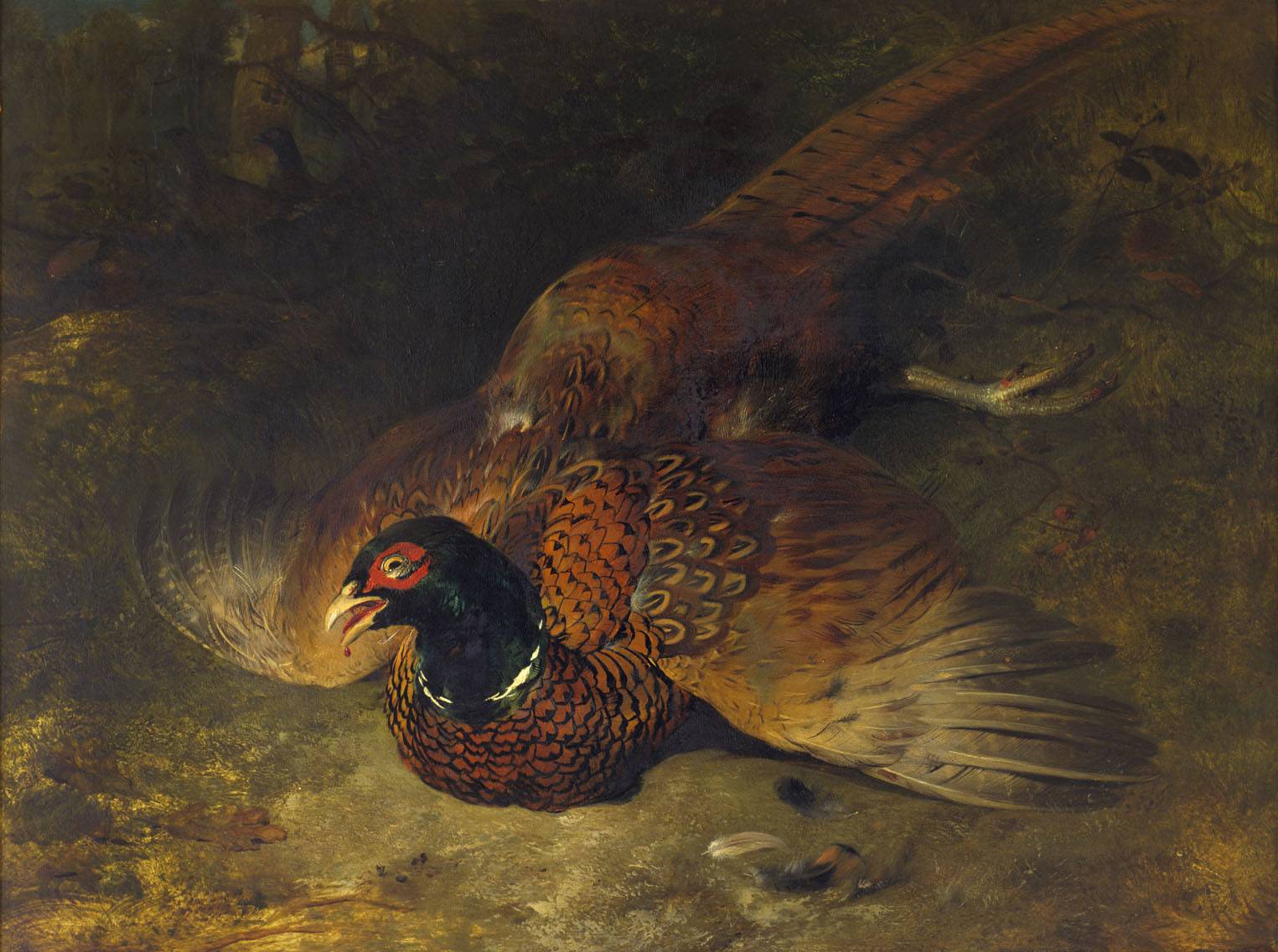
by Edwin Landseer (1802 - 1873)
Landseer’s paintings of deer in the Scottish Highlands, and of dogs and other animals, made him a favourite painter in the Victorian era, and of Queen Victoria herself. He was a precociously gifted artist, exhibiting at the Royal Academy by the age of sixteen, and was elected as an associate member at the earliest possible age, twenty four. By then he had a famous facility for painting textures such as fur and feathers. This picture was one of a pair painted in 1832; the other, of a ptarmigan belonged latterly to Henry McIlhenny and hung in Glenveagh Castle, from where he donated several large Landseers to the Philadelphia Museum of Art.
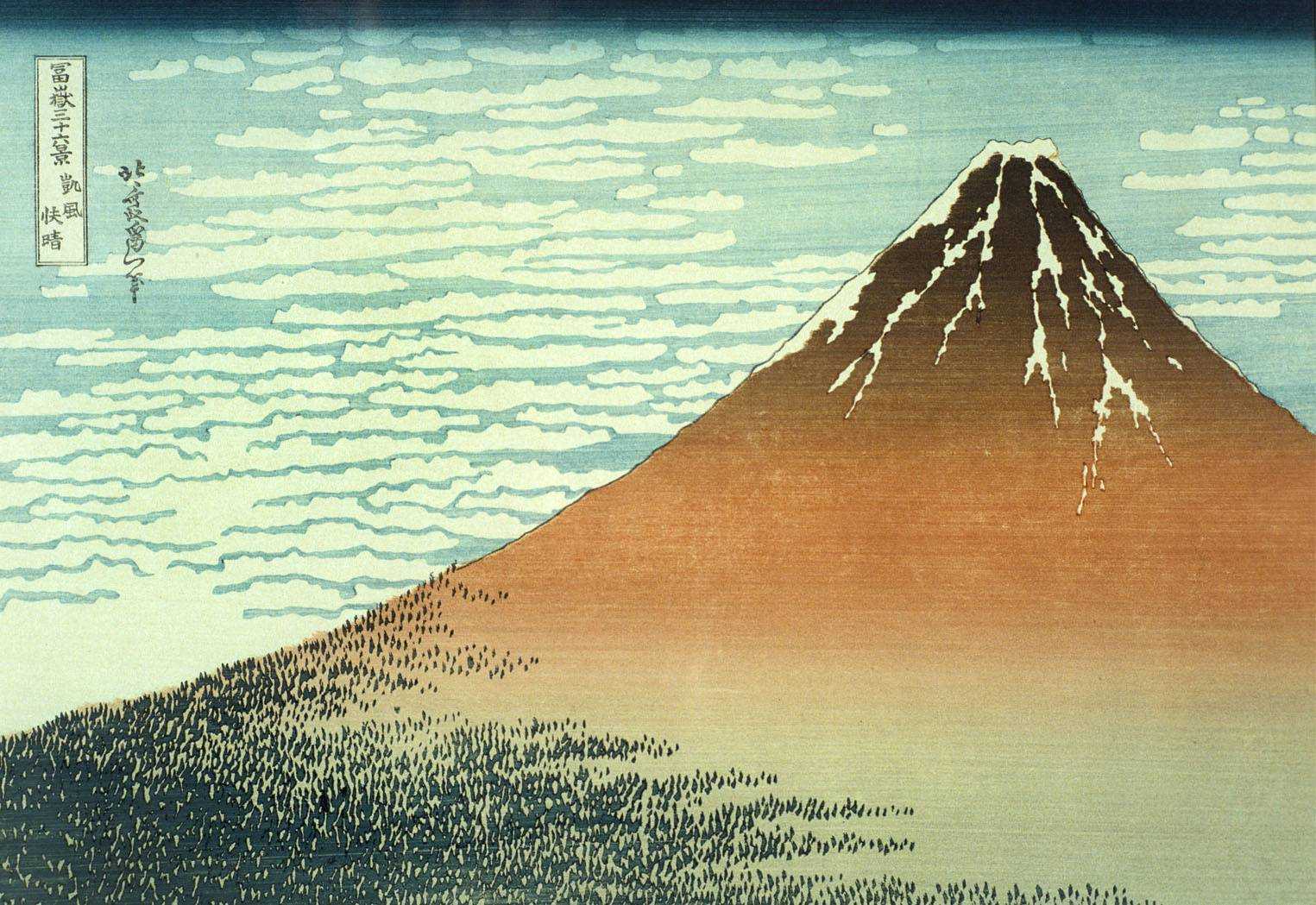
by Katsushika Hokusai (1760 - 1849)
Hokusai, one of the most prolific Japanese artists, produced over 30,000 drawings during a long life, at the end of which he described himself as ‘the old man mad about drawing’. This is one of his, and Japan’s most famous images, coming from the series called Thirty-Six Views of Mount Fuji which he worked on in the early 1830s.

by John Bratby (1928 - 1992)
Bratby was born in England in 1928 and studied at the Royal College of Art, London. There he won in 1954 a scholarship to Rome where he met Derek Hill, and painted this picture of his wife ill in bed (Bratby was married to the acclaimed painter Jean Cooke). It is typical of a series of ‘tabletop’ paintings he did at that time which were carefully composed using everyday kitchen articles. The subject is as much the paraphernalia of bed-sit existence as his wife’s illness, which is nevertheless reflected in the fevered and garish colours.

by Oliver Messel (1904-78)
Messel was a leading designer for ballet and opera in London throughout the 1930s and 1940s. He gave this costume design to Hill as a coming of age present.
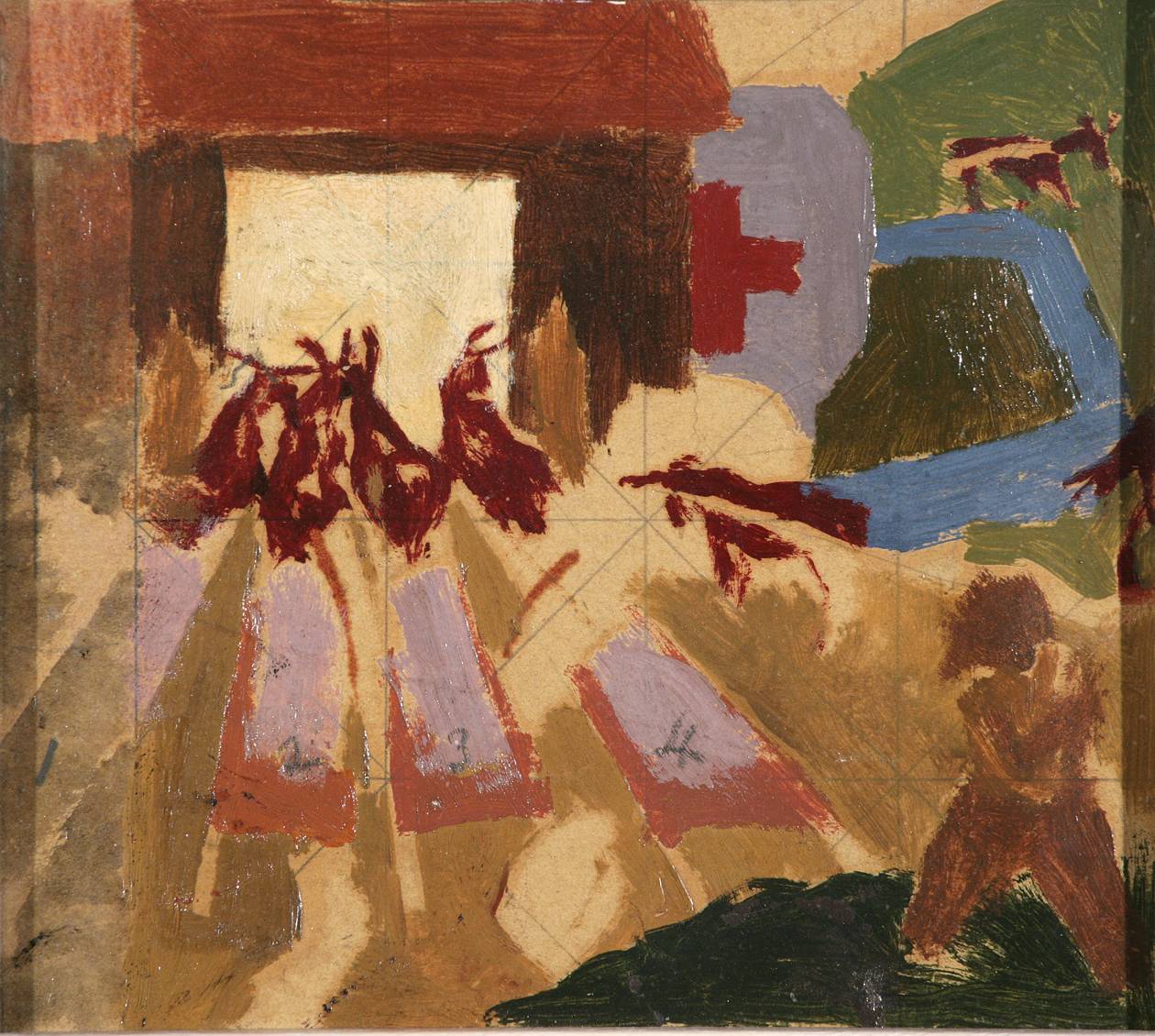
by Sir Stanley Spencer (1891-1959)
Spencer was an English artist who studied at the Slade. He was a war artist in Macedonia during the first world war while he worked with the Field Ambulance service. The finished work, for which this is a study, is in the collection of the Imperial War Museum in London.
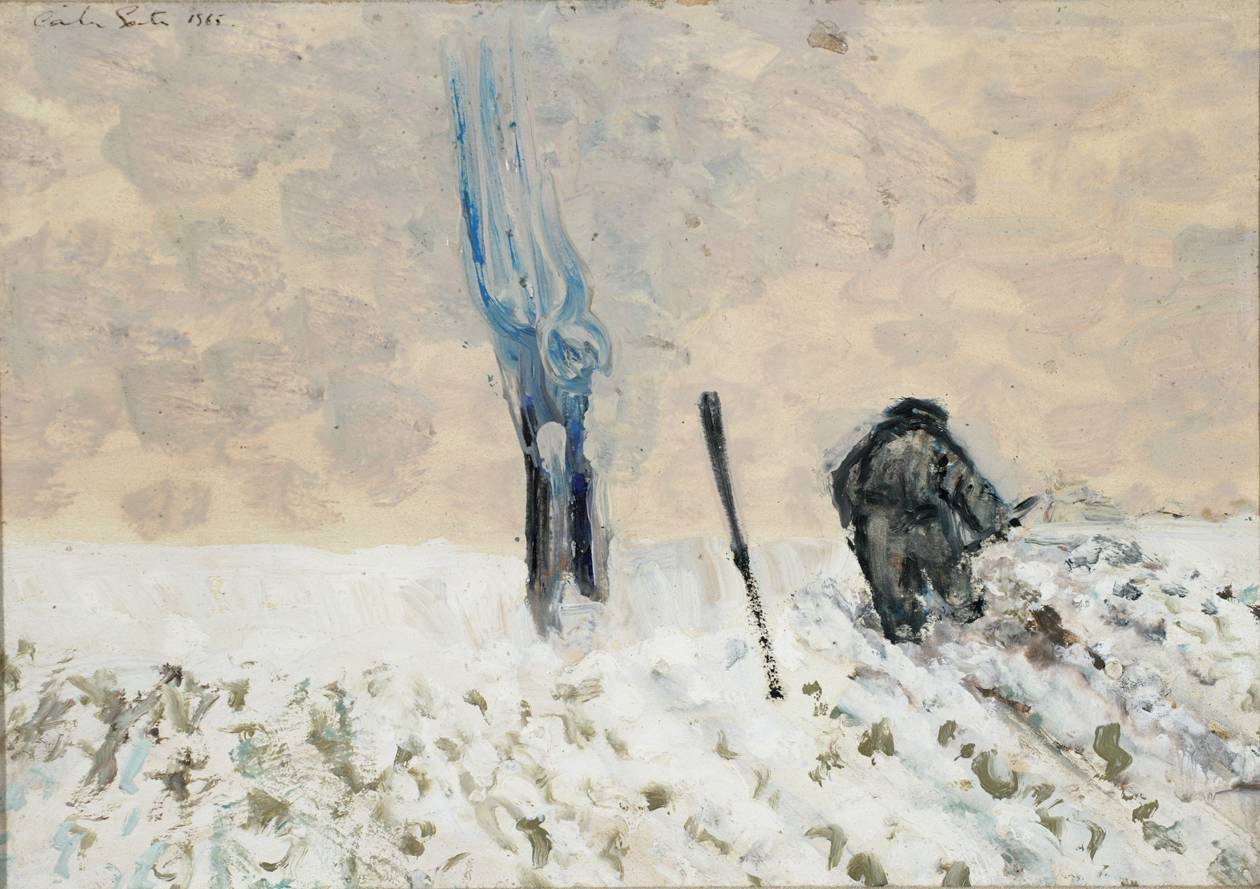
by Camille Souter (b.1929)
Born in England as Betty Holmes, Souter moved to Dublin at an early age. She trained as a nurse but later taught herself to paint.

by Louis Le Brocquy (1916 - 2012)
Although from Dublin, Le Brocquy spent much of his life abroad, in England and the south of France. Hill met him in 1946 when they were both painting in the west of Ireland; this is one of two small works in the Derek Hill Collection painted on that occasion.
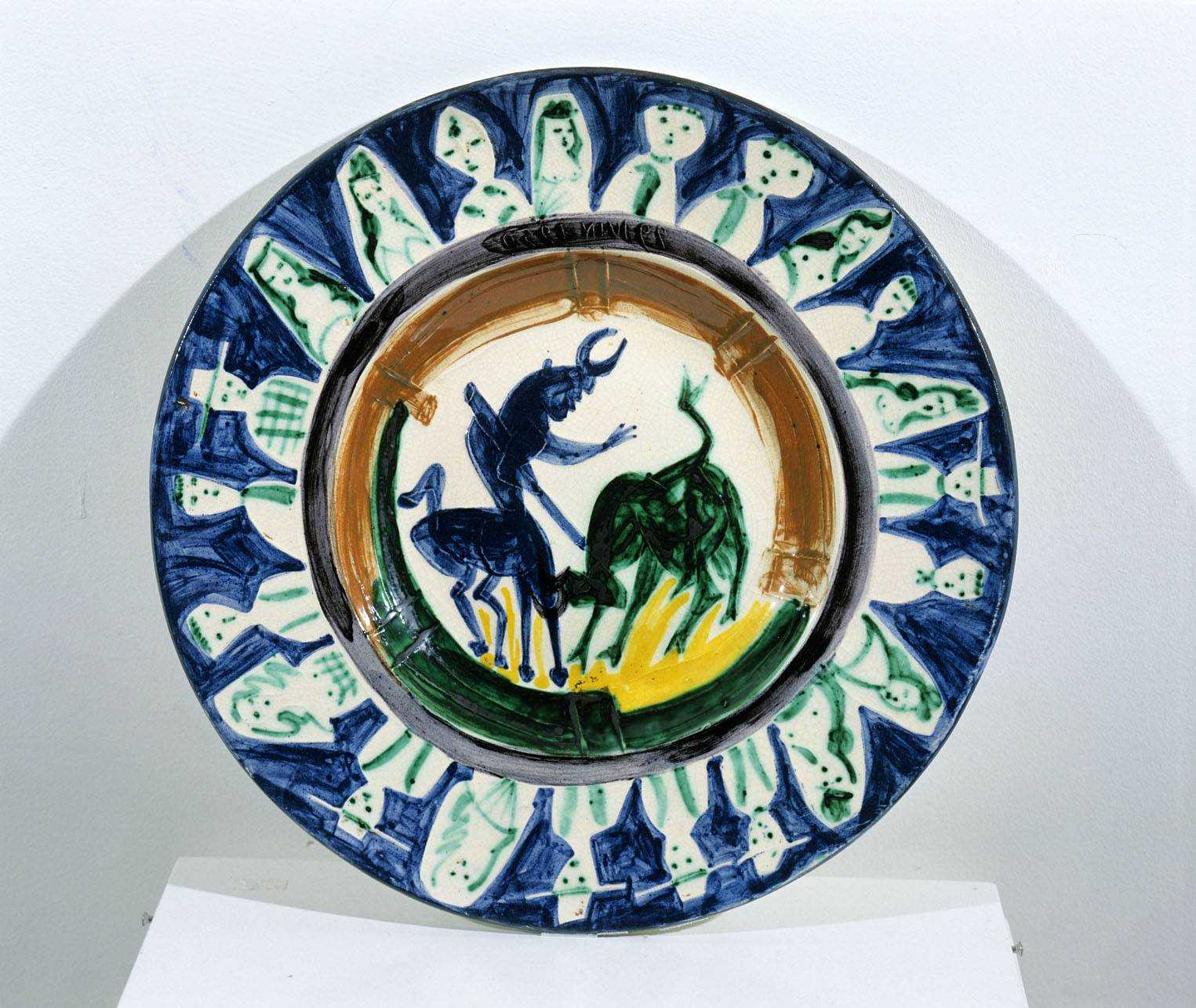
by Pablo Picasso (1881 - 1973)
Picasso, best known for his paintings, was also a prolific producer of sculpture and ceramics. From 1947 he worked in the Madoura Pottery at Vallauris in southern France, making unique and limited edition ceramics. In the latter case Picasso made or designed an original for reproduction by assistants. Bullfight, from June 1950, is one of three such editioned pieces in the Derek Hill collection, bought by him at the Madoura Potter in the 1950s.
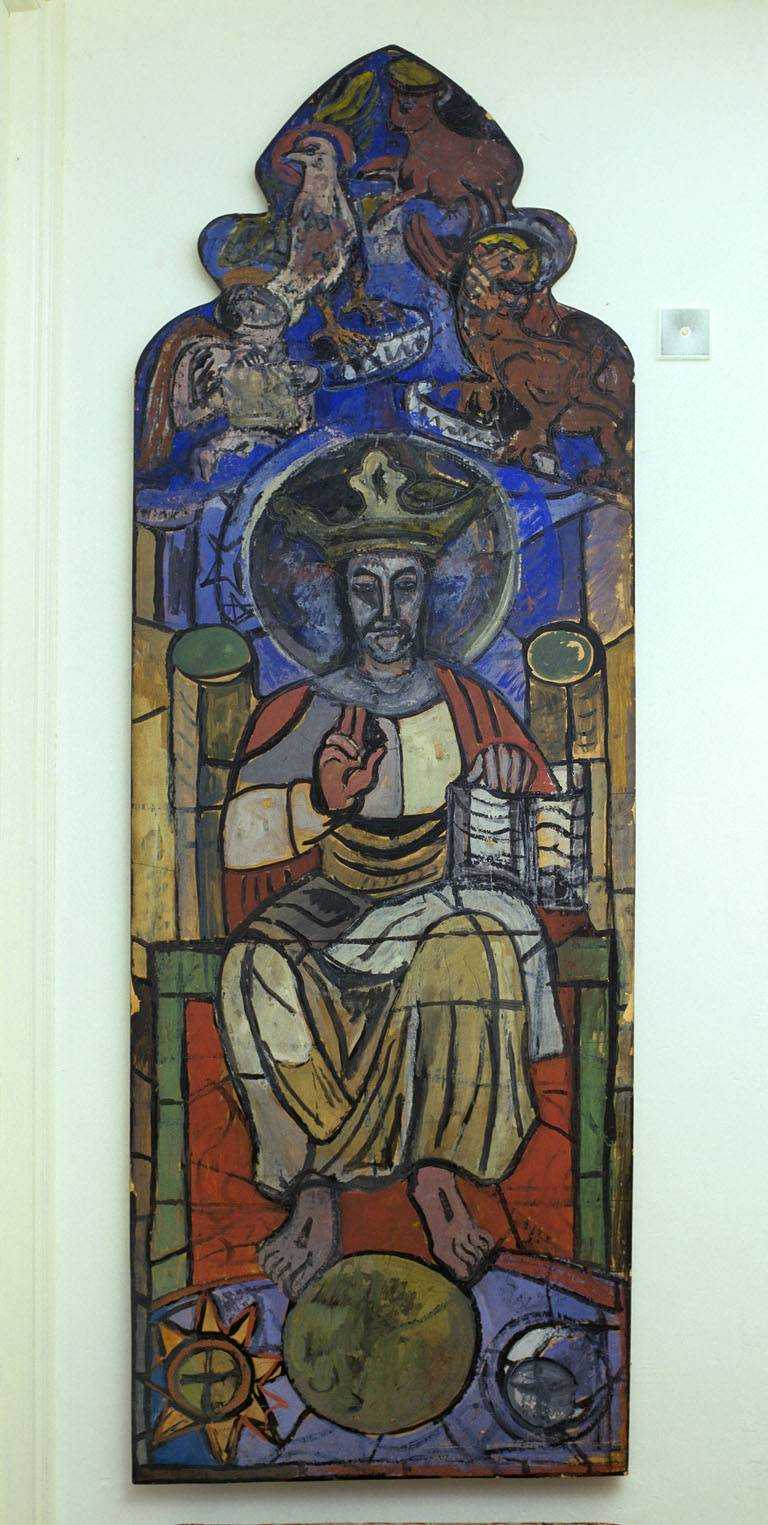
by Evie Hone (1894 - 1955)
This is the cartoon, or full-size study, for the centre light of a three light window (the other two showing The Saved and The Damned) in a private chapel in Warwickshire. Evie Hone grew up in County Dublin but studied in London and Paris, with Audré Lhote and then Albert Gleizes in the late 1920s. From them came her interest in Cubist and abstract art, which led almost inevitably to stained glass. In the 1930s and 1940s she undetook many commissions at the Dublin stained glass studios An Túr Gloine, while continuing to paint.

by Alfred Wallis (1855 - 1942)
Wallis was a Cornish fisherman and naive artist. In 1999 the Tate Gallery in StIves held an exhibition entitled ‘Two Painters’ which showed works by Wallis and the Tory Island naive artist James Dixon.
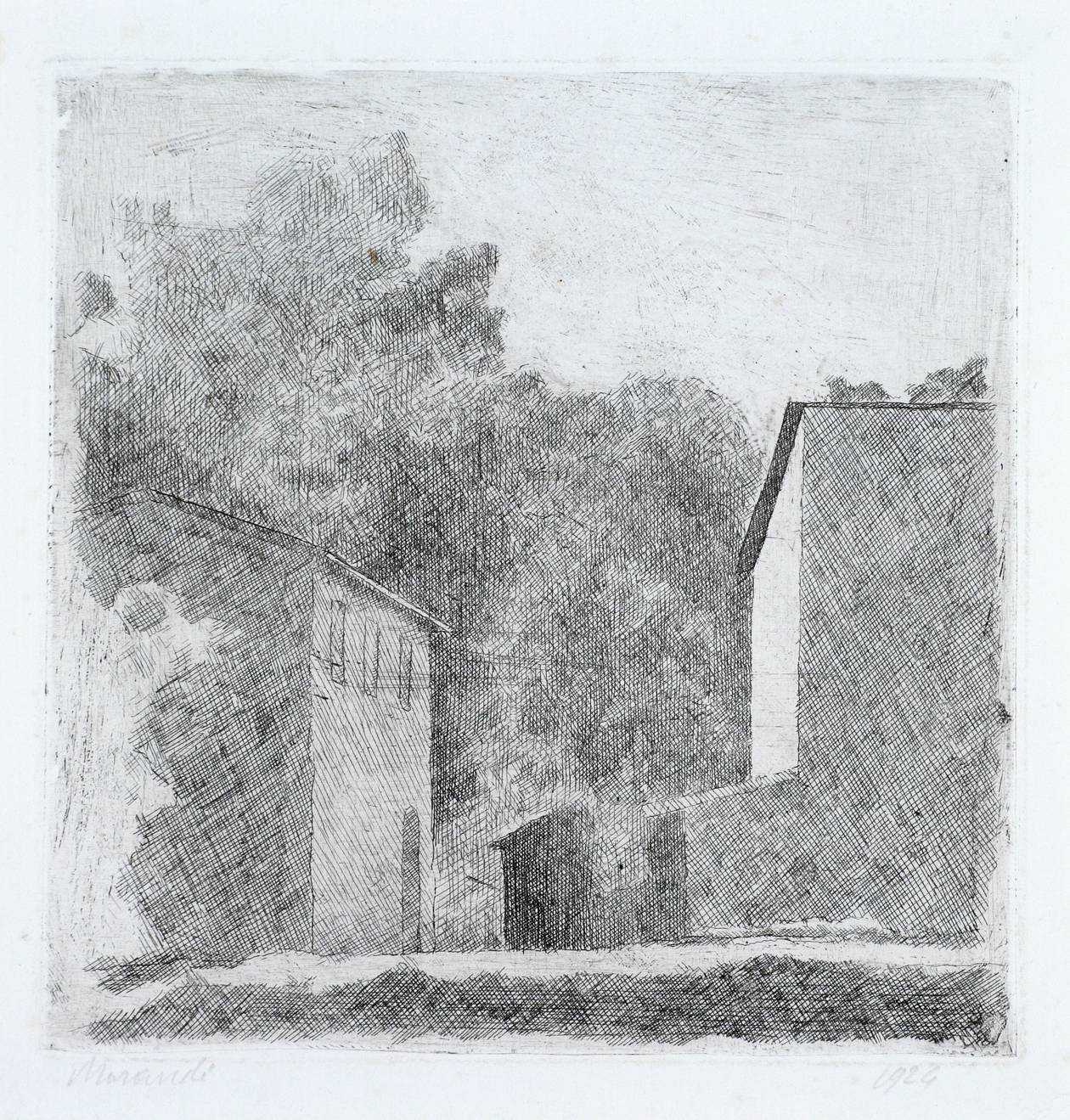
by Georgio Morandi (1890 - 1964)
Georgia Morandi was born in Bologna, Italy, where he lived until his death. He was an artist and print maker best known for still lifes of bottles and jugs.